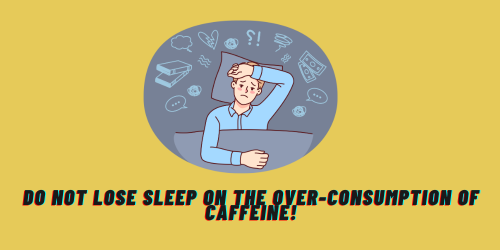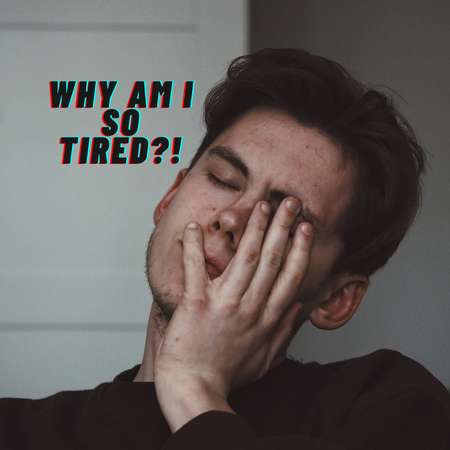Sprinting: An Overlooked Approach To Boosting Energy
Sprinting is when an individual runs at their fullest speed for a short period. This form of exercise is not only beneficial for cardiovascular health, but it can help improve other areas of the body. A person does not have to be competitive when performing sprints. For those who would like to increase athletic performance, sprinting can help. More importantly, this exercise will be helpful in boosting an individual’s energy levels daily if done consistently. Much power is given through short intense exercises. If the goal is to only stay in shape, healthy, and achieve mental clarity. Sprinting can achieve all of this in a brief moment of time. Other than improving performance here are some advantages to this exercise:
- Cardiovascular Health:
- Sprinting is an excellent cardiovascular exercise that improves heart health by enhancing blood circulation.
- Calorie Burning:
- Sprinting is an efficient way to burn calories, aiding in weight management and fat loss.
- Muscle Development:
- Sprinting engages multiple muscle groups, promoting muscle development, particularly in the legs, glutes, and core. It also stimulates the growth of fast-twitch muscle fibers.
- Metabolic Boost:
- High-intensity sprinting stimulates the metabolism, leading to an “afterburn” effect known as excess post-exercise oxygen consumption (EPOC). This means the body continues to burn calories even after the workout is complete.
Sprinting is somewhat of a cardiovascular exercise but it is not a long form of running. This exercise can be done at any time of the day. It would be ideal to do this in the morning since waking up the person is not fully awake. In fact, sprinting is better than drinking coffee if wanting to be fully alert. As caffeine appears to be convenient it does not provide long-term energy. On average in the United States, people drink at least 3 cups of coffee a day. This is not to say consuming coffee is bad. But energy wise there are better alternatives than relying on coffee or caffeine in general.
If you to learn about increasing your focus check out The Cardio-Concentration Connection: Unleash Your Best Focus

Exercise over Caffeine?
Exercise is an effective protocol for the body to wake itself up. Movement is a key component to keep the brain and body actively functioning. There is some effort required to get up and execute a short session of exercise. As for consuming caffeine, it is quite convenient to brew coffee first thing in the morning. Although caffeine can offer the feeling of wakefulness it can also impact the individual’s hormonal output. Not only coffee but other forms of beverages that contain caffeine may do the same. Some prefer to add coffee condiments or additives to their coffee, and these extra items can add up. Here are some things to note and are possibilities on what it could do to the body:
- Negative Impact on Metabolic Health:
- Sugar-sweetened coffee can contribute to an increased intake of added sugars, which is linked to metabolic issues, such as insulin resistance and weight gain.
- Dental Health: Excess sugar in coffee can contribute to tooth decay and cavities.
- Caloric Intake:
- Weight Management: Some coffee additives, especially those high in fats and sugars, can contribute to increased calorie intake. Consuming high-calorie coffee beverages regularly without considering overall calorie intake may lead to weight gain.
- Artificial Additives:
- Chemical Exposure: Flavored syrups and creamers may contain artificial additives, preservatives, and flavorings. Regular exposure to these chemicals might have long-term health implications.
- Potential for Overconsumption:
- Unconscious Caloric Intake: People may underestimate the caloric content of coffee additives, leading to unintentional overconsumption of calories throughout the day.
- Impact on Blood Sugar Levels:
- Blood Sugar Spikes: Sweetened coffee can lead to rapid spikes in blood sugar levels, followed by crashes. This can impact energy levels and contribute to feelings of fatigue.
- Individual Sensitivities:
- Digestive Issues: Some individuals may experience digestive discomfort or sensitivity to certain additives, leading to issues like bloating or indigestion.

Consuming an Excessive Amount of Caffeine Can Negatively Impact Sleep Quality.
- Stimulant Effect:
- Blockage of Adenosine Receptors: Caffeine is a central nervous system stimulant that works by blocking adenosine receptors in the brain. Adenosine is a neurotransmitter that promotes relaxation and drowsiness. By blocking these receptors, caffeine prevents the calming effects of adenosine, leading to increased alertness and wakefulness.
- Impact on Sleep Hormones:
- Alteration of Melatonin Production: Caffeine can interfere with the production of melatonin, a hormone that regulates the sleep-wake cycle. Melatonin levels typically rise in the evening to signal the body that it’s time to sleep. Consuming caffeine close to bedtime may delay the release of melatonin, making it harder to fall asleep.
- Sleep Fragmentation:
- Reduced Deep Sleep: Caffeine has been shown to reduce the amount of deep sleep (slow-wave sleep) individuals get during the night. Deep sleep is crucial for physical restoration, memory consolidation, and overall sleep quality.
- Increased Arousal:
- Elevated Cortisol Levels: Caffeine consumption can lead to increased cortisol levels, especially in sensitive individuals. Cortisol is a stress hormone that promotes wakefulness. Elevated cortisol levels can make it more difficult to relax and fall asleep.
- Delayed Sleep Onset:
- Extended Half-Life: The half-life of caffeine varies among individuals but is generally several hours. This means that even after consuming caffeine, a significant amount remains in the body for an extended period. Consuming caffeine too close to bedtime may delay the onset of sleep.
So How is Exercise Any Better?
Exercise tends to be a superior long-term strategy for boosting energy levels compared to relying on excessive amounts of coffee. Regular physical activity enhances overall health, promoting improved cardiovascular function, increased endurance, and enhanced metabolic efficiency. Exercise stimulates the release of endorphins, neurotransmitters that contribute to a positive mood and increased alertness.
Unlike the temporary and potentially jitter-inducing effects of excessive caffeine, exercise provides sustained energy throughout the day. Additionally, the long-term benefits of regular exercise extend beyond mere energy enhancement, encompassing improved mental well-being, reduced risk of chronic diseases, and enhanced cognitive function. Adopting a physically active lifestyle not only fosters a sustainable approach to energy management but also contributes to holistic well-being.
Where And How Sprinting Can Be Done?
Sprinting is best done in a training facility or outside. Because of the added space people are able to test power and speed. Some may attempt sprinting up a hill since it adds a challenge to it. However there can be some reasons a person would not be able to have access to a facility or the weather could be unusually extreme (incredibly cold, hot, or it is not recommended to go outside).
An alternative is to sprint in place at home, this will allow a person to simulate sprinting. It is similar to doing the high-knees exercise.
Important To Do/Know Before Sprinting
- A person can spend 10 to 120 seconds sprinting since this is meant to be short.
- It is also important to do a light warm-up and dynamic stretching to prepare the body and prevent potential injury from occurring.
- Since the purpose is to feel awake and energized for the day there is no need to track progress (unless the individual wants to be competitive).
Alternatives to Sprinting in General?
Sprinting has many benefits and best of all it is always quick and intense exercise to do. If sprinting is not something of interest there are other exercises to substitute it like doing suicide drills. They both have almost the same characteristics as they are about intensity, speed, and power. The difference is that sprints are one directional whereas suicide drills are two directional. The individual is running back and forth from one point to the other. However there is no need to limit to only these movements, it is that these exercises are superior because they both use the aerobic and anaerobic systems.
The goal is intensity as this will initiate certain systems to use energy reserves in the body. Therefore, the individual will have long-lasting energy throughout the day. However, everyone is different and has different energy levels.
These systems allow the production and use of energy created from the foods consumed. The main source is Adenosine triphosphate (ATP) which is produced from sugars and oxygen. Aerobic system uses oxygen to develop energy whereas the anaerobic system breaks down glucose through intense physical movement. Sprinting is mostly an anaerobic exercise but still, the individual has to breathe which means there is an uptake of oxygen.
Conclusion
Sprinting or intense exercising has the advantage over drinking loads of coffee a day. There is nothing wrong with drinking coffee however if wanting to get a quick boost of energy without caffeine. Short bursts of sprints are effective in doing so. The increase in blood flow and oxygen play a pivotal role in overall health and the use of stored energy in the body. Also, exercise can contribute to better sleep at night rather than caffeine interfering with the body’s sleep/wake cycle. Sleep is an important part of the individual’s restorative process to recharge and utilize energy for tomorrow.
If you found this post helpful, please consider sharing and subscribing!
Sources
- Anaerobic Capacity is Associated with Metabolic Contribution and Mechanical Output Measured During the Wingate Test
- Effects of Aerobic-, Anaerobic- and Combined-Based Exercises on Plasma Oxidative Stress Biomarkers in Healthy Untrained Young Adults
- The Benefits of Aerobic vs. Anaerobic Exercise and the Impact on Weight Loss






